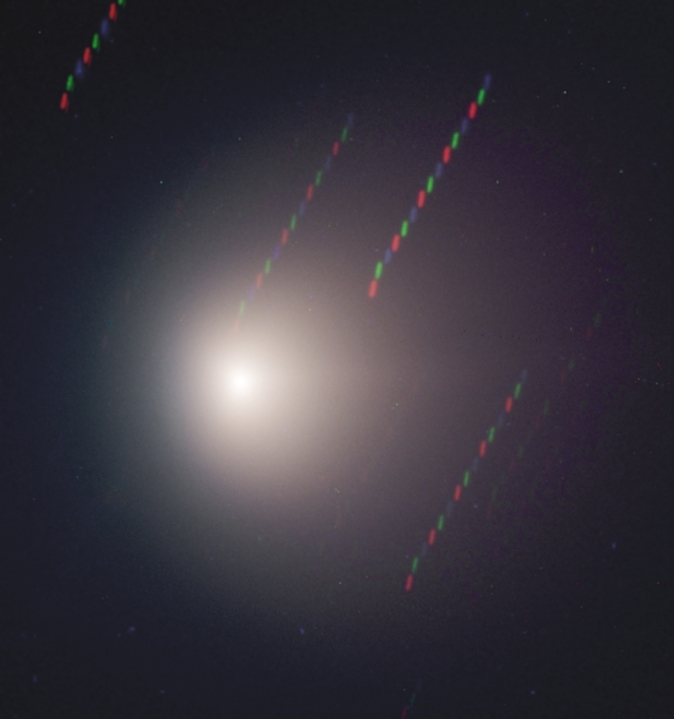Date published: 2023-01-27
Finally! Comet C/2022 E3 (ZTF)
After desperately waiting for two weeks in a row, the weather here in Uppsala finally improved and we could observe the famous comet C/2022 E3 (ZTF) with our rooftop telescope at the Angström Laboratory, the so called “Westerlund Telescope”.
As the comet just recently passed its perhelion, i.e. its closest point to the Sun, the comet’s speed is still very high. Moreover it is currently approaching Earth and will reach the closest distance to Earth soon on February 1st, 2023. As a result, the comet’s angular speed on the sky is high and in particular its speed changes very quickly. In order to track the comet (not the stars) at a focal length of nine meters with the Westerlund f/10 Telescope, the tracking speed of the telescope needed to be adopted every few minutes. Current ephemerides can be obtained through the IAU Minor Planet Center.
The picture below is a 15-minute color stack produced from a total of 15 individual 1-minute exposures (5 minutes per Johnson B, V, R filter) of the comet. Since the telescope was tracking the comet, the nearby stars (in the constellation Ursa minor) appear to be moving in alternating colors.

In order to visualize the comet’s movement, I made a movie (see below) from a set of 150 exposures we took later that evening. This time, the telescope was set to track the stars and the exposure time per frame is 5-seconds. The movie covers a duration of approximately 15-minutes (taking into account the time for readout of each frame). The frame rate is 15 fps, the movie is thus a time lapse at 75x-speed.
As note aside. Light pollution in the city of Uppsala is quite bad, especially in the vicinity of the observatory several construction site are extremely bright. Hence there is no chance of spotting the comet with the naked eye. Even with binoculars it was difficult and we we just got a glimpse of it.
